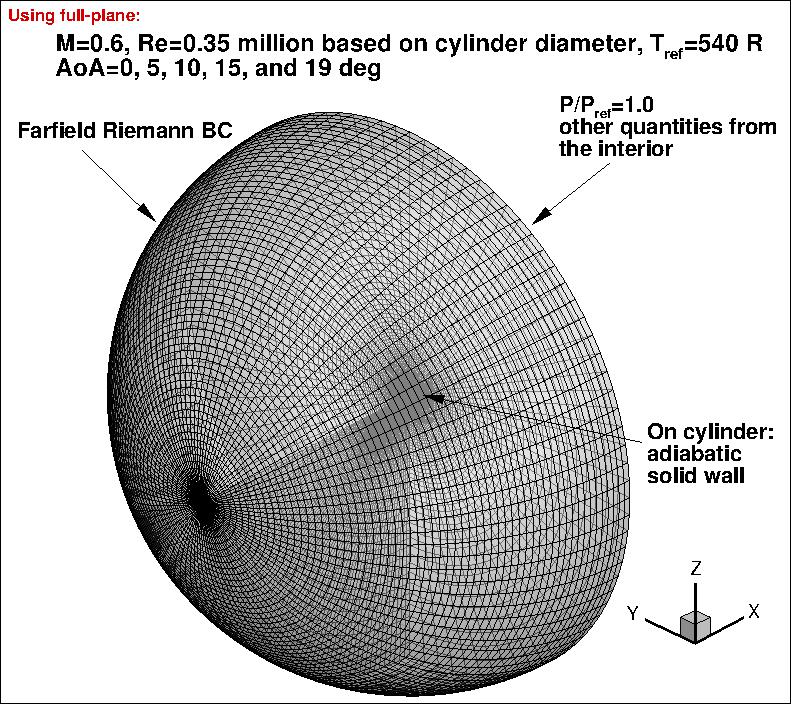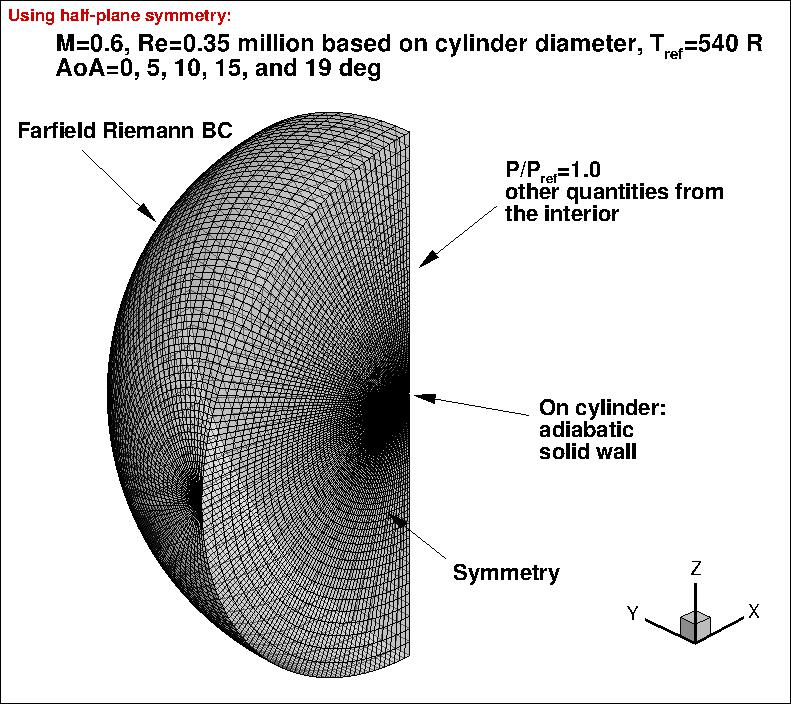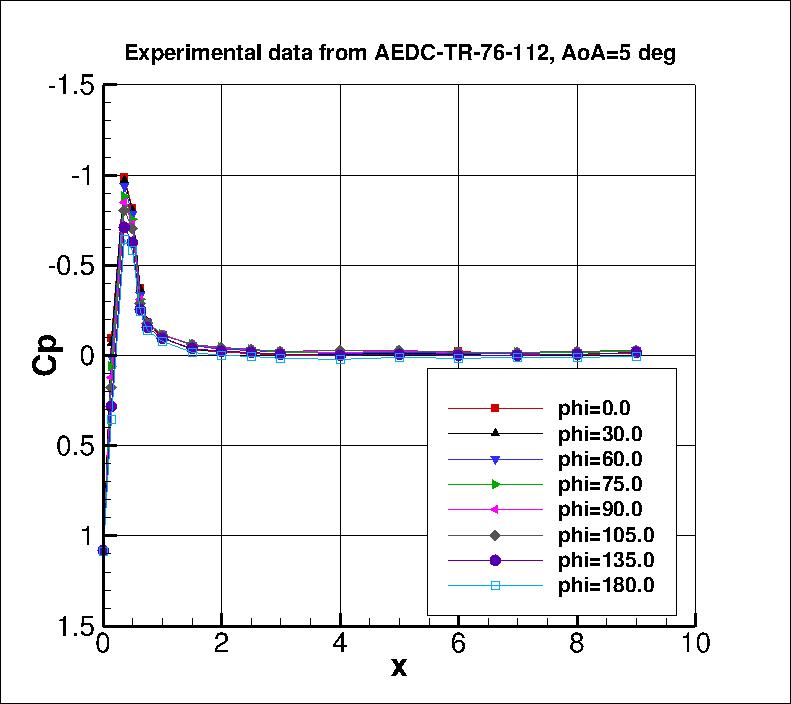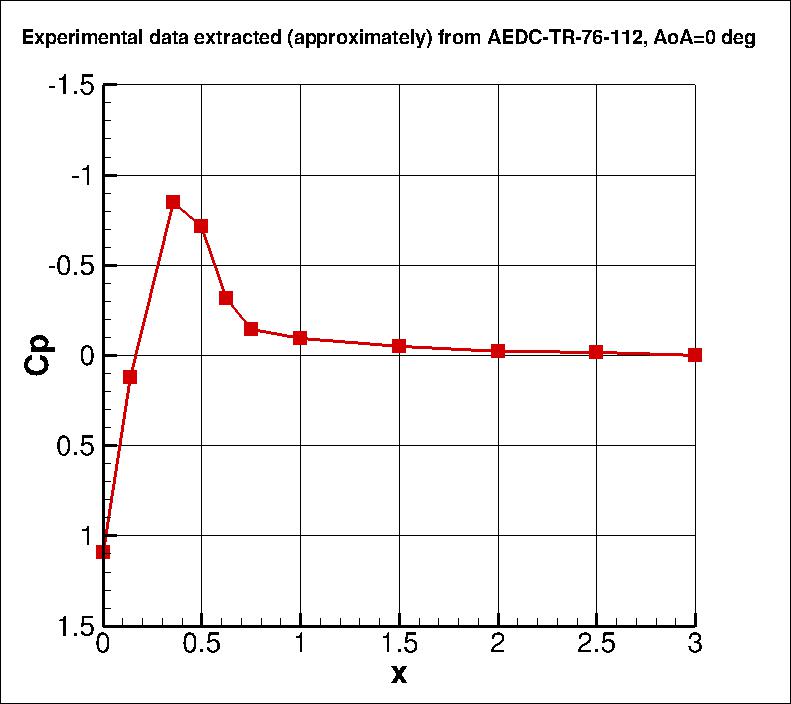 |
Langley Research CenterTurbulence Modeling Resource |
Return to: Turbulence Modeling Resource Home Page
TURBULENCE MODEL NUMERICAL ANALYSIS
3D Hemisphere Cylinder Validation Case (NEW)
This is an update of an earlier 3D hemisphere cylinder study.
The grids here are new.
The purpose here is to provide a test case for a turbulent flow over a smooth body of revolution in 3D.
This case is designed primarily for numerical
analysis of turbulence model simulations; e.g., convergence properties, effect of order of accuracy, etc.
The geometry is taken from the
experimental model studied in AEDC-TR-76-112, 1976, "An Investigation of Separated Flow About a
Hemisphere Cylinder at 0- to 19-Deg Incidence in the Mach Number Range of 0.6 to 1.5" authored by Tsieh, T.,
https://apps.dtic.mil/sti/pdfs/ADA073451.pdf).
At the "farfield" boundary, a Riemann invariant BC is employed, with the
external boundary assumed to be freestream conditions based on input Mach number.
Boundary conditions are given in the following two figures (one for computing in the full plane and one for half plane).
In the experiment, the cylinder diameter was 1 inch and its length was 10 inches.
For computing forces, the reference area of this case is taken to be 10 in2 (for the full 360 degrees), or
5 in2 (for a half-plane computation of 180 degrees).
For computing moment coefficient about the y-axis (pitching moment, CM,y), the moment center is taken
at (0,0,0), and the reference chord, Cref, is taken as 10 inches.
If needed, the reference semispan is 0.5 inches.
In summary, the following geometry information for computing forces and moment should be used:
Note, for special purposes (if needed) a second type of grid
is supplied with an aft closure geometry and a spherical (or half spherical in the half
plane case) farfield. Along this farfield, Riemann boundary condition can be applied
uniformly. The body geometry upstream of x=10 is identical to the orginal
hemisphere-cylinder geometry. The body is closed downstream of x=10 with a closure taken
from reference DTRC/SHD-1298-01 (March 1989), entitled "Geometric Characteristics of
DARPA Suboff Models" by Nancy C. Groves, Thomas T. Huang, and Ming S. Chang.
Note, even though this closed geometry has the same
surface grid and shape as the standard grid between x=0 and x=10, in VERIFICATION exercises its results may be
slightly different because of the closed back end and different boundary conditions.
Use with caution, or else conduct verification exercises only against
other results using the same geometry and BCs.
SPECIAL PURPOSE GRID with aft geometry closure
In the first figure below, the experimental surface pressure
coefficients from AEDC-TR-76-112 are plotted as functions of x for the turbulent flow at angle of attack of 5 degrees.
Results are shown for various positions around the azimuth.
In the experiment, phi=0 deg corresponds with the "top" or leeside of the body (which faces away from the wind
when the body is at angle of attack), and phi=180 deg corresponds with the "bottom" of the body
(facing the wind).
Approximate results extracted from a figure in the reference at angle of attack of 0 degrees are shown in the second figure below.
The experimental data are provided here:
What to Expect:
(Other turbulence model results may be added in the future.)
Return to: Turbulence Modeling Resource Home Page
Responsible NASA Official:
Ethan Vogel




RESULTS
LINK TO EQUATIONS
MRR Level
SA-neg
SA-neg eqns
4
Page Curator:
Clark Pederson
Last Updated: 11/10/2021